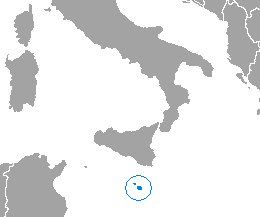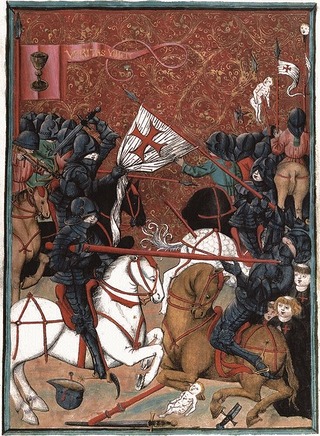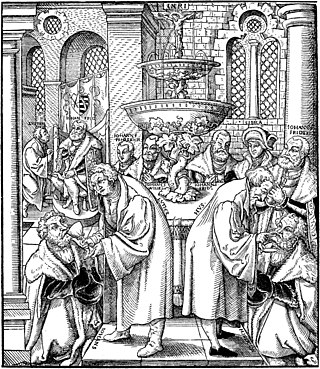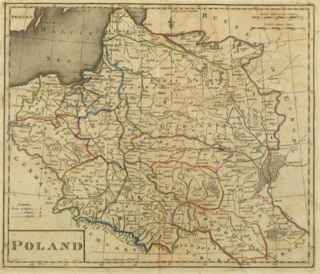
The Czech Republic, also known as Czechia, is a landlocked country in Central Europe. Historically known as Bohemia, it is bordered by Austria to the south, Germany to the west, Poland to the northeast, and Slovakia to the southeast. The Czech Republic has a hilly landscape that covers an area of 78,871 square kilometers (30,452 sq mi) with a mostly temperate continental and oceanic climate. The capital and largest city is Prague; other major cities and urban areas include Brno, Ostrava, Plzeň and Liberec.

Maltese is a Semitic language derived from late medieval Sicilian Arabic with Romance superstrata. It is spoken by the Maltese people and is the national language of Malta, and the only official Semitic and Afroasiatic language of the European Union. Maltese is a Latinised variety of spoken historical Arabic through its descent from Siculo-Arabic, which developed as a Maghrebi Arabic dialect in the Emirate of Sicily between 831 and 1091. As a result of the Norman invasion of Malta and the subsequent re-Christianization of the islands, Maltese evolved independently of Classical Arabic in a gradual process of latinisation. It is therefore exceptional as a variety of historical Arabic that has no diglossic relationship with Classical or Modern Standard Arabic. Maltese is thus classified separately from the 30 varieties constituting the modern Arabic macrolanguage. Maltese is also distinguished from Arabic and other Semitic languages since its morphology has been deeply influenced by Romance languages, namely Italian and Sicilian.

The Slavic languages, also known as the Slavonic languages, are Indo-European languages spoken primarily by the Slavic peoples and their descendants. They are thought to descend from a proto-language called Proto-Slavic, spoken during the Early Middle Ages, which in turn is thought to have descended from the earlier Proto-Balto-Slavic language, linking the Slavic languages to the Baltic languages in a Balto-Slavic group within the Indo-European family.

Y, or y, is the twenty-fifth and penultimate letter of the Latin alphabet, used in the modern English alphabet, the alphabets of other western European languages and others worldwide. According to some authorities, it is the sixth vowel letter of the English alphabet. Its name in English is wye, plural wyes.

Z, or z, is the twenty-sixth and last letter of the Latin alphabet. It is used in the modern English alphabet, in the alphabets of other Western European languages, and in others worldwide. Its usual names in English are zed, which is most commonly used in International English and zee, only used in American, sometimes Canadian and Caribbean English and with an occasional archaic variant izzard.
A caron is a diacritic mark commonly placed over certain letters in the orthography of some languages to indicate a change of the related letter's pronunciation.

The Hussite Wars, also called the Bohemian Wars or the Hussite Revolution, were a series of civil wars fought between the Hussites and the combined Catholic forces of Holy Roman Emperor Sigismund, the Papacy, and European monarchs loyal to the Catholic Church, as well as various Hussite factions. At a late stage of the conflict, the Utraquists changed sides in 1432 to fight alongside Roman Catholics and opposed the Taborites and other Hussite spin-offs. These wars lasted from 1419 to approximately 1434.
Etymology is the scientific study of the origin and evolution of a word's semantic meaning across time, including its constituent morphemes and phonemes. It is a subfield of historical linguistics, philology, and semiotics, and draws upon comparative semantics, morphology, pragmatics, and phonetics in order to construct a comprehensive and chronological catalogue of all meanings that a morpheme, phoneme, word, or sign has carried across time.
English rarely uses diacritics, which are symbols indicating the modification of a letter's sound when spoken. Most of the affected words are in terms imported from other languages. The two dots accent, the grave accent, and the acute accent are the only diacritics native to Modern English, and their usage has tended to fall off except in certain publications and particular cases.

Utraquism, also called Calixtinism, was a belief amongst Hussites, a reformist Christian movement, that communion under both kinds should be administered to the laity during the celebration of the Eucharist. It was a principal dogma of the Hussites and one of the Four Articles of Prague.
Theodiscus was a term used in the early Middle Ages to refer to the West Germanic languages. The Latin term was borrowed from the Germanic adjective meaning "of the people" but, unlike it, was used only to refer to languages. In Medieval Western Europe non-native Latin was the language of science, church and administration, hence Latin theodiscus and its Germanic counterparts were used as antonyms of Latin, to refer to the "native language spoken by the general populace". They were subsequently used in the Frankish Empire to denote the native Germanic vernaculars. As such, they were no longer used as antonym of Latin, but of walhisk, a language descendant from Latin, but nevertheless the speech of the general populace as well. In doing so Latin theodiscus and the Germanic reflexes of *þiudiskaz effectively obtained the meaning of "Germanic", or more specifically one of its local varieties – resulting in the English exonym "Dutch", the German endonym Deutsch, the modern Dutch word for "German", Duits, and the obsolete or poetic Dutch word for Dutch and its dialects such as Diets. In Romance languages the same word yielded the Italian word for "German", tedesco, and the old French word used for Dutch or, depending on the locality, German speakers, tiois.

The Czech Republic's official long and short names at the United Nations are Česká republika and Česko in Czech, and the Czech Republic and Czechia in English. All these names derive from the name of the Czechs, the West Slavic ethnolinguistic group native to the Czech Republic. Czechia, the official English short name specified by the Czech government, is used by many international organisations.
Czech orthography is a system of rules for proper formal writing (orthography) in Czech. The earliest form of separate Latin script specifically designed to suit Czech was devised by Czech theologian and church reformist Jan Hus, the namesake of the Hussite movement, in one of his seminal works, De orthographia bohemica.

The Low Countries comprise the coastal Rhine–Meuse–Scheldt delta region in Western Europe, whose definition usually includes the modern countries of Luxembourg, Belgium and the Netherlands. Both Belgium and the Netherlands derived their names from earlier names for the region, due to nether meaning "low" and Belgica being the Latinized name for all the Low Countries, a nomenclature that became obsolete after Belgium's secession in 1830.

The Latin script is the most widely used alphabetic writing system in the world. It is the standard script of the English language and is often referred to simply as "the alphabet" in English. It is a true alphabet which originated in the 7th century BC in Italy and has changed continually over the last 2,500 years. It has roots in the Semitic alphabet and its offshoot alphabets, the Phoenician, Greek, and Etruscan. The phonetic values of some letters changed, some letters were lost and gained, and several writing styles ("hands") developed. Two such styles, the minuscule and majuscule hands, were combined into one script with alternate forms for the lower and upper case letters. Modern uppercase letters differ only slightly from their classical counterparts, and there are few regional variants.

The ethnonyms for the Poles (people) and Poland include endonyms and exonyms. Endonyms and most exonyms for Poles and Poland derive from the name of the West Slavic tribe of Polans (Polanie), while in some languages the exonyms for Poland to derive from the name of another tribe – the Lendians (Lędzianie).

A wagon fort, wagon fortress, wagenburg or corral, often referred to as circling the wagons, is a temporary fortification made of wagons arranged into a rectangle, circle, or other shape and possibly joined with each other to produce an improvised military camp. It is also known as a laager, especially in historical African contexts, and a tabor among the Cossacks.
Slavicisms or Slavisms are words and expressions borrowed or derived from Slavic languages.










